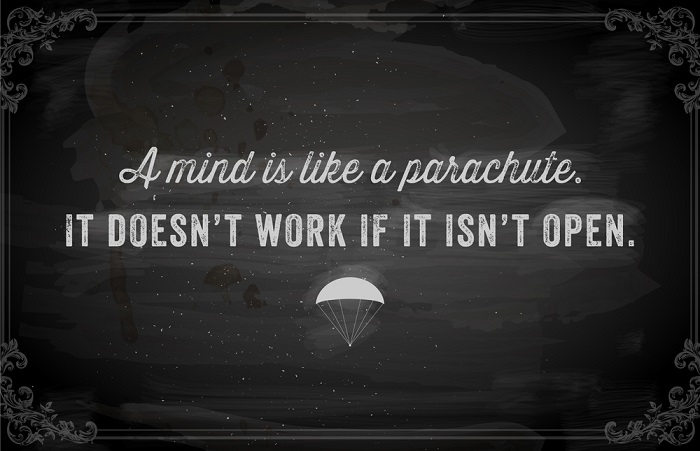
As a sociologist of science I remain outside of the controversies surrounding unconventional claims in science. My commitment is to the judicial process within the scientific community rather than the resolution of specific debates. My general concern is to try to foster an interdisciplinary program, best called anomalistics, on the study of facts that seem unexplained by our current models. In order to study anomalies in science we have to be interdisciplinary because we don’t know ultimately where an anomaly will fit. For example, if it is a UFO, we don’t know if it will contribute to astronomy, sociology, psychology, or meteorology in the end. An interdisciplinary approach to anomalies is absolutely necessary.
There are three broad approaches to anomaly studies. The first approach is usually called the Fortean approach. It is generally characterised by what critics would call “mystery mongering.” The main problem with it is that if you give an explanation to a phenomenon, even if you agree with the existence of the anomaly, the representatives of this approach are unhappy because they prefer the idea of mystery.
The second common approach is what critics usually call the debunkers’ approach. This is the main attitude of the orthodox scientific community towards anomaly claims. It is characterised by the Committee for the Scientific Investigation of Claims of the Paranormal (CSICOP). “Whatever is claimed is nothing but … something else.” Seemingly anomalous phenomena are denied first and sometimes investigated only second. Like the Fortean the debunker is not concerned with the full explanation. Whereas the Fortean types don’t want explanations, the debunkers don’t need them as they believe they have already them.
The third approach, which I’ve tried to empower and legitimate, is the zetetic. Zetetic is an old word coming from the Greek followers of the skeptical philosopher, Pyrrho. The main feature of this approach is to emphasise the communal norm of skepticism present in the scientific community. By skepticism I would like to strongly distinguish between doubt and denial. Doubt is the skeptical approach; the debunker’s approach is denial. True skepticism which is a part of science consists of doubt preceeding inquiry, and that essentially takes the position of non-belief rather than of disbelief. The main elements of the zetetic approach are: firstly, ignorance; secondly, some doubt; thirdly, an emphasis upon inquiry. Charles Sanders Peirce required that the first and primary obligation of any philosopher or scientist is to do nothing that would block inquiry. This approach involves a general acceptance of what Mario Bunge calls methodism, on science as method, not science as some established absolute body of knowledge.
The most important thing here is that maverick ideas, unconventional claims, and anomalies must be viewed not as crises but as opportunities. Some of these claims, probably a small minority, will in fact turn out to have some substance because after all that is what drives science forward. Without anomalies and their validation, later incorporation, and explanation, we would not have any progress in science. We have a fundamental problem in science of somehow trying to balance openness with conservatism, and imagination and creativity with criticism. How can we keep science an open system? From the history of science it is clear that radical conceptual innovations are not accepted until all the orthodox interpretations have failed. There are different viewpoints on this. Michael Polanyi defends the conservative side. He said,
“There must be at all times a predominantly accepted scientific view of the nature of things, in the light of which, research is jointly conducted by members of the scientific community. Any evidence which contradicts this view has to be disregarded, even if it cannot be accounted for, in the hope that it will eventually turn out to be false and irrelevant.”
I don’t agree with Polanyi. The good scientist is one who is unprejudiced with an open mind, ready to embrace any new idea supported by facts. The history of science shows, however, that this is not usually the case. The burden of proof is not only on the claimant, but he is faced with denial rather than simply doubt.
As one looks at the history of science, a number of other interesting concepts have been put forward. Gunther Stent argued that there have been premature ideas ahead of their time which the culture then was not ready to accept. The same is true for ‘postmature’ sciences. There are cases where the knowledge was available for some time, but new developments were slow to come. An example is the laser.
The history of science is full of some very notable rejections. Some of them are now even silly sounding. Lord Kelvin said that x-rays would prove to be a hoax. Thomas Watson, once chairman of the board of IBM, said in 1943, “I think there is a world market for about five computers”. This got so bad that in 1889, Charles Duell, who was then the commissioner of the US Office of Patents, wrote a letter to president McKinley asking him to abolish the Patents Office since “everything that can be invented has been invented”. [See note at end of this piece for a later clarification of this fact.] Ernst Mach said he could not accept the theory of relativity any more than he could accept the existence of atoms and other such dogmas, as he put it. Edison supposedly said that he saw no commercial future for the light bulb. When the phonograph was first demonstrated at the French Academy of Science, one scientist leaped up, grabbed the exhibitor, started shaking him, and said, “I won’t be taken in by your ventriloquist!” Rutherford called atomic power “moonshine”. The history of science is full of such stories.
The best interpretation of this can be given by what is called “type one” and “type two” error. “Type one” error is thinking that something special is happening when nothing special really is happening. “Type two” error is thinking that nothing special is happening, when in fact something rare or infrequent is happening. Obviously these are at opposite poles, and you increase your probability of avoiding one kind of error by increasing the probability of making the other kind.
When an unconventional claim is made, we must decide whether it is a discovery or some kind of mistake. There are fundamentally three kinds of errors: it can be a mistake or accident, an artefact, or an impropriety. These three have different degrees of moral stigma attached to them. Everybody makes mistakes, but fraud is something else. Most interesting for the sociology of science is the relationship between the scientist making the claim and the scientific community and how the claim gets labelled by them. In general we can distinguish between what Isaac Asimov called “endoheretics” and “exoheretics”. Endoheretics are scientists with appropriate credentials. If the person is outside the scientific community or at least outside of his speciality, he is an exoheretic. If a person is an endoheretic, he will be considered as eccentric and incompetent, whereas if the person is an exoheretic, he will be regarded as a crackpot, charlatan, or fraud.
In general, most people, especially within the anomalies communities, tend to accept the idea that there are three basic ways in which the general scientific community will probably come around to accepting their claim. The first is if they can produce a replicable phenomenon, especially one replicable by skeptics. The second is the hope that an acceptable theory will develop a set of mechanisms that will predict the phenomenon. The third is a successful application which will bypass the scientific community altogether.
We must remember that an anomaly is essentially an extraordinary claim, but ‘extraordinary’ is always something that’s a matter of degree. An anomaly can only be spoken of sensibly in relationship to a certain theory that it seems to violate. But theory changes. If the theoretical framework changes and is made more hospitable to the previously outlandish claim, that claim may no longer be anomalous. Also, science is hardly unified. The theory in one science may not be exactly compatible with theory in another science, so that what may be accepted as an anomaly in one science may be much less of an anomaly in another. For example, Lord Kelvin said that the age of the sun was much too young to allow the earth to be old enough to support Darwin’s theory of evolution. If the biologists had listened to the leading physicists of that day, they would have given up evolutionary theory, since what violates physics violates biology. Luckily, physics came around to changing its point of view when fusion was discovered and the sun was seen to be much older, making evolutionary theory possible. Only time will tell what is premature and what is postmature in science.
In recent years within the history, philosophy, and psychology of science there are now strong voices such as those of constructivism and relativism speaking out against the older, classical positivist view. Max Planck once said that a new scientific truth does not triumph by convincing its opponents, but rather because its opponents eventually die and a new generation grows up that’s familiar with it. In the sociology of science, one viewpoint represented by David Bloor is that what is considered as bedrock consensual science is socially negotiated. Some of the basics central to the scientific method like replication are extremely problematic. What is considered to be a true replication is something very much negotiable. When parapsychologists claim to have replicated an experiment, critics do their best to point out, even ‘nit-pick’ how different the experiments are. Thus it is difficult sometimes to tell exactly what a true replication is. If someone like James Randi, a magician, accomplishes in a stage show what appears to be what a psychic does in the laboratory under controlled conditions, then most critics say that Randi has replicated what the psychic has achieved. This is an unfair comparison.
Scientism, the mistaken dogmatic acceptance of current paradigms, is another significant problem. Freud was the first to note the mistaken belief that science consists in nothing but proved propositions, and felt that this was a demand made only by those who crave authority and need to replace religious catechism with a scientific one.
We must distinguish between anti-scientific and non-scientific ideas. There are those who are willing to play by the scientific rules of the game but who are not accepted for some reason or another. I call them protoscientists. Some protosciences are widely accepted. Parapsychology is perhaps one of the most sophisticated and accepted since the Parapsychological Association is affiliated with the AAAS. Then there are the quasi-scientific belief systems. Astrology is the best example of this. People claim that it is compatible with science, fitting proper scientific rules, but there is no experimental verification. Astrologers are not anti-scientific, but simply practitioners. Then there are pragmatic or esoteric thinkers. They claim to have discovered the secret of the universe. They are anti-scientific. If they cannot explain it, they hope that later on scientists will explain it and if not, to them it doesn’t matter much. Though it sounds outlandish, throughout the history of science many breakthroughs occurred that way.
Anesthesia is a good example. There are no proper mechanisms even today to explain it fundamentally, but it works. Then we have the mystical approaches, purely subjective, of two types: (1) consensual mystical occultism, which is intersubjective; and (2) solitary mysticism. Obviously there is a large spectrum of approaches. We can differentiate extraordinary claims first in terms of mainstream acceptance or rejection, and whether they are methodologically acceptable or not. There are also things which are institutionally unacceptable despite good methodology. Protoscientific efforts, in my opinion, such as parapsychology at its best always meets certain hostility, animosity, and accusations of pseudoscience. Finally there are things which are unacceptable both methodologically and institutionally. This is pseudoscience.
One must consider distinctions between anomalies or extraordinary events that have been examined scientifically vs. non-scientifically, such as via metaphysics or theology. Here we can distinguish between the abnormal, the paranormal and the supernatural. If something is rare or extraordinary in science but it is explainable, we call it abnormal. The term paranormal refers to something that science can explain some day but at the present moment cannot. These are the scientific frontiers. However, there are things that are fundamentally inexplicable by science, the supernatural. Critics often confuse the paranormal and the supernatural and turn it into a political fight. One should distinguish also between variables or facts and relationships or processes. If we have ordinary facts in an ordinary relationship, we may call it normal, orthodox science. If we have ordinary facts in an extraordinary relationship, such as two people who have the same thought being linked by ESP, this is parascience. We usually see facts but infer processes. All kinds of ordinary facts can be considered from extraordinary relationships. If we have an extraordinary fact in an ordinary relationship, for example, a dinosaur in Loch Ness, that would be a cryptoscientific claim. The worst combination is paracryptoscience, where we have an extraordinary set of facts and claim an extraordinary relationship between them. Velikovsky, for example, claims strange things in the sky, apparently violating conventional astronomy. What is required to bring an anomalous claim into scientific acceptance? In cryptoscience, no replication is needed. One Big Foot, captured, would suffice. For parascience, replication is required, and an anomalous claim has to topple over every other normal explanation of the results. Whereas in cryptoscience it is easy to prove but difficult to falsify hypotheses, in parascience it is easy to falsify and hard to validate.
People often confuse parasciences and cryptosciences. For example, a white crow is a cryptozoological phenomenon. All too often in parapsychology people talk as though cryptoscientific claims were being made, as if a single critical experiment could prove it. That is ridiculous from the scientific viewpoint. The history and philosophy of science has shown that there is no such thing as a critical experiment. A single experiment doesn’t change the body of science. Replications and changes in theory must follow, and perhaps the whole worldview must change.
There are some myths about science and scientists that need to be dispelled. Science gets mistaken as a body of knowledge for its method. Scientists are regarded as having superhuman abilities of rationality inside objectivity. Many studies in the psychology of science, however, indicate that scientists are at least as dogmatic and authoritarian, at least as foolish and illogical as everybody else, including when they do science. In one study on falsifiability, an experiment was described, an hypothesis was given to the participants, the results were stated, and the test was to see whether the participants would say, “This falsifies the hypothesis”. The results indicated denial, since most of the scientists refused to falsify their hypotheses, sticking with them despite a lack of evidence! Strangely, clergymen were much more frequent in recognising that the hypotheses were false.
Originally I was invited to be a co-chairman of CSICOP by Paul Kurtz. I helped to write the bylaws and edited their journal. I found myself attacked by the Committee members and board, who considered me to be too soft on the paranormalists. My position was not to treat protoscientists as adversaries, but to look to the best of them and ask them for their best scientific evidence. I found that the Committee was much more interested in attacking the most publicly visible claimants such as the “National Enquirer”. The major interest of the Committee was not inquiry but to serve as an advocacy body, a public relations group for scientific orthodoxy. The Committee has made many mistakes. My main objection to the Committee, and the reason I chose to leave it, was that it was taking the public position that it represented the scientific community, serving as gatekeepers on maverick claims, whereas I felt they were simply unqualified to act as judge and jury when they were simply lawyers.
Despite serious philosophical and sociological questions about how well the system works, I believe in the process of science and scientific progress. Science is a self-correcting system. Encouragement of fair play and due process in the scientific arena will allow that self-correction to work best. A diversity of opinions and dialogue is extremely important. We cannot close the door on maverick claims.
References
Truzzi, M., On the Extraordinary: An Attempt at Clarification, Zetetic Scholar 1 (1978), p. 11-22
Westrum R., and Truzzi, M., Anomalies: A Bibliographic Introduction with Some Cautionary Remarks, Zetetic Scholar 2 (1978), p. 69-90.
M. Truzzi, Zetetic Ruminations on Skepticism and Anomalies in Science, Zetetic Scholar 12 & 13 (1987), p. 7-20.
Note
In the article above, Dr. Truzzi brought up the example of the commissioner of Patents. Following is a letter submitted to the Spring/Summer 1991 issue of “Frontier Perspectives”, clarifying this statement: In “Frontier Perspectives” of Fall/Winter 1990, the report on my talk included a quotation frequently attributed to Charles Duell, a past commissioner of the U.S. Office of Patents, in which he purportedly wrote President McKinley that “everything that can be invented has been invented.” Kendrick Frazier has since called my attention to a persuasive article by Samuel Sass “A Patently False Patent Myth,” The Skeptical Inquirer, vol. 13, Spring 1989, pp. 310-312] arguing that Duell probably never really wrote such a statement. I made the error of relying on secondary sources for what is probably a misquotation.
Marcello Truzzi, Ph.D. is Professor of Sociology at Eastern Michigan University at Ypsilanti, Michigan, and Director, Center for Scientific Anomalies Research, Ann Arbor, MI



